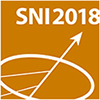Speaker
Description
Solid materials play a crucial role for many energy-related applications. In situ diffraction is an important method for investigating their synthesis as well as their function and neutrons are an ideal probe. Many energy-related materials contain light elements such as H, Li, N, O, which can often be better located in crystal structures by neutrons as compared to X-rays. Control over external parameters such as pressure and temperature often requires bulky sample environment, which is easier to penetrate by neutrons than by X-rays in general. Further, neutrons can probe many properties of materials, e.g. crystal structure, diffusion, magnetism, vibrations, and thus yield extensive information. In this contribution, we will show that unraveling basic steps of reactions in functional materials under close to operating conditions by time-resolved in situ investigations is the key to rationalize and gain better control over synthesis procedures and over function. Examples include hydrides, oxides and intermetallics as functional materials for rechargeable batteries, fuel cells, hydrogen storage, permanent magnets, and photocatalysis. As the potential of in situ neutron diffraction is intimately connected to instrumental development, recent advances in sample environment will be reviewed.
[1] A. Götze, H. Auer, R. Finger, T. C. Hansen, H. Kohlmann, Phys. B, doi.org/10.1016/j.physb.2017.11.024
[2] V. K. Peterson, J. E. Auckett, W.-K. Pang, IUCrJ 2017, 4, 540

